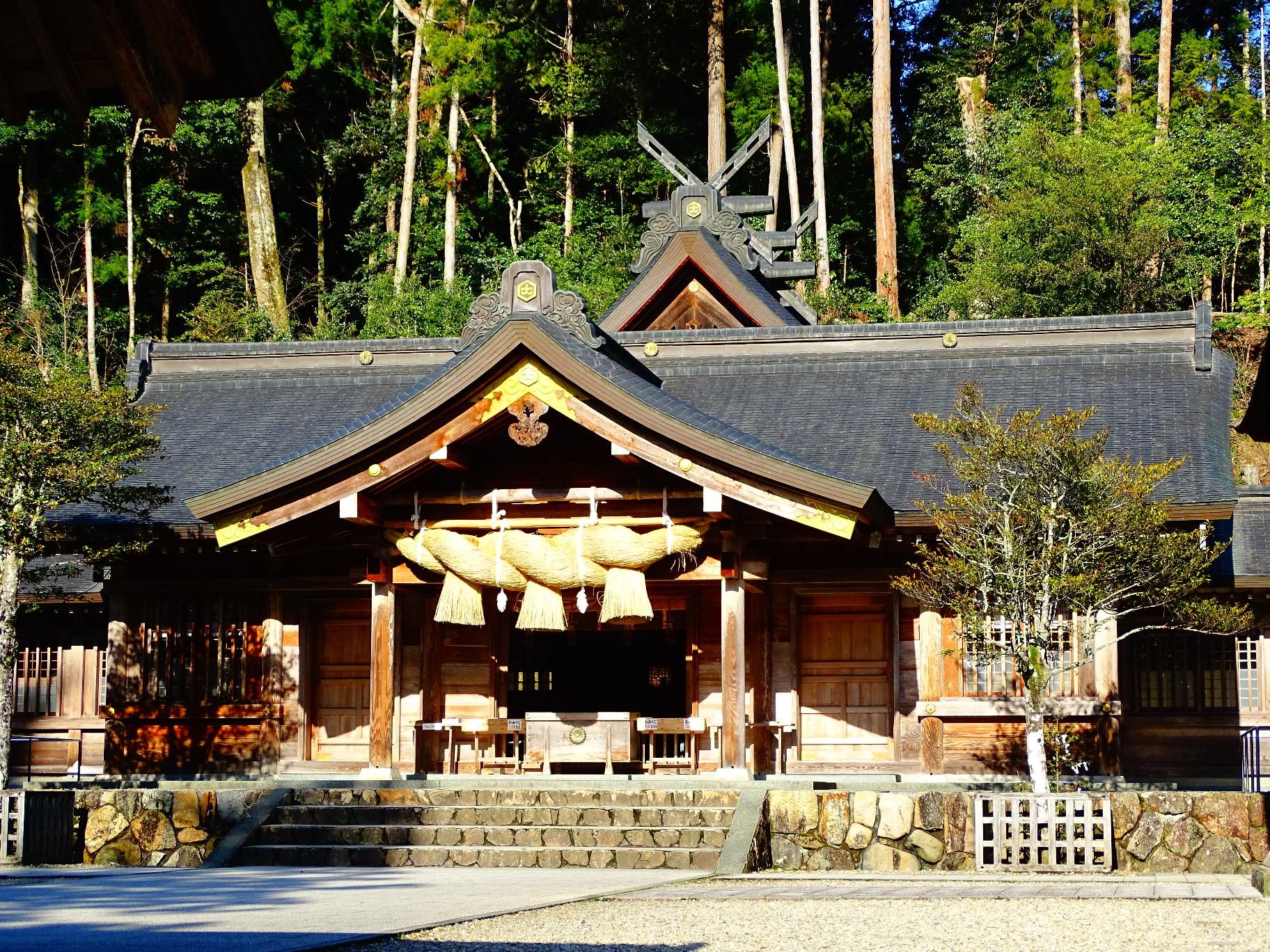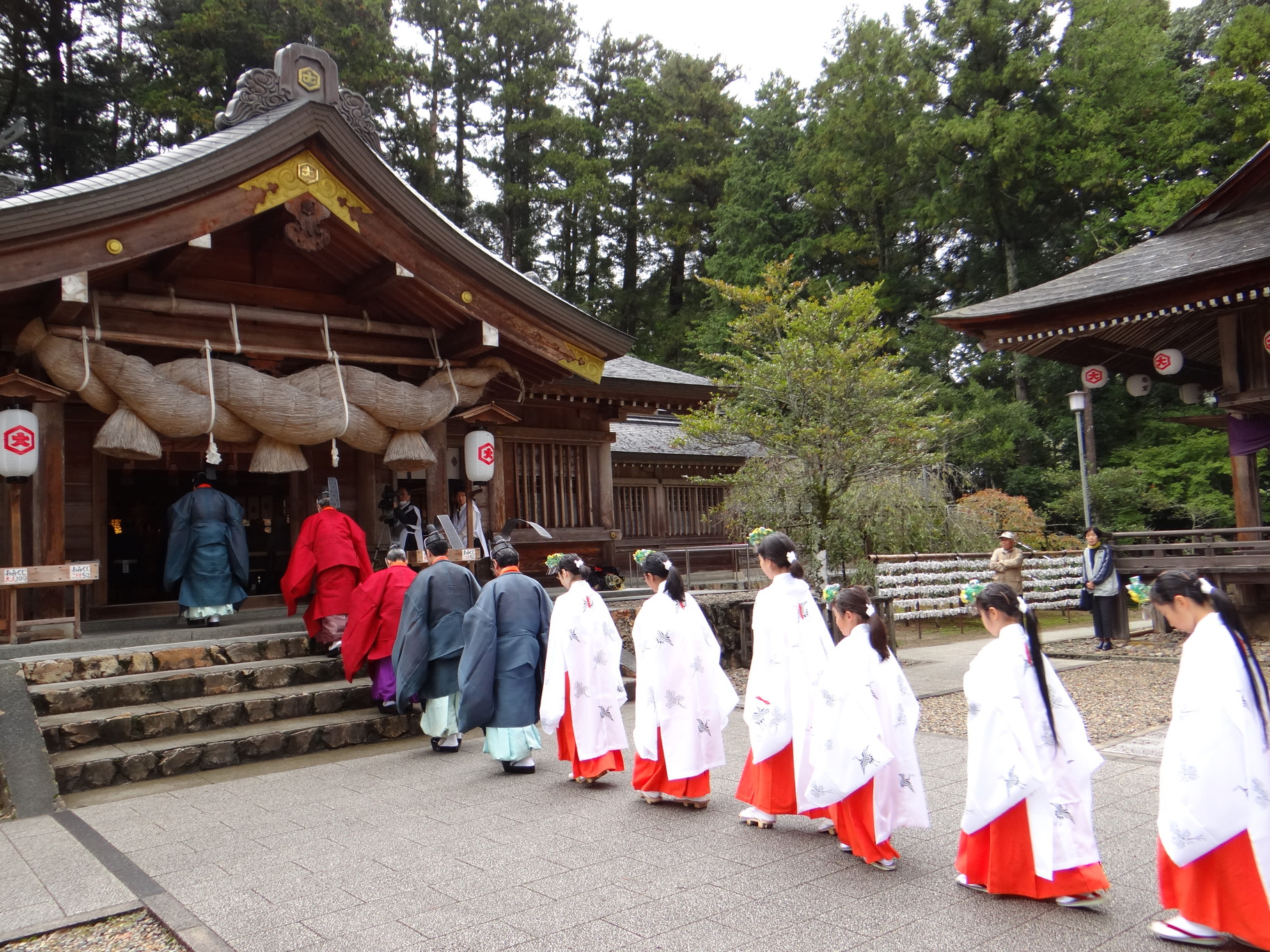What's Shinto?
Shinto is a general term for the activities
of the Japanese people to worship all the
deities of heaven and earth, and its origin
is as old as the history of the Japanese.
It was towards the end of the 6th century
when the Japanese were conscious of these
activities and called them 'Way of Kami(the
deity or the deities )'. It coincides the
time when the 31st Emperor Yomei prayed before
an image of Buddha for the first time as
an emperor for recovery of his illness. Thus
accepting Buddhism, a foreign religion, the
Japanese realized existence of a tradition
of their own faith.
After having gone through a long history
since then, this indigenous faith, Shinto,
has been developed into four main forms:
the Koshitsu Shinto ( Shinto of the Imperial
House), the Jinja Shinto (the Shrine Shinto),
the Shuha Shinto (the Sect Shinto), and the
Minzoku Shinto (the Folk Shinto).
What's Jinja?
 |
Shinto was thus influenced by Buddhistic
way of worship,yet, it has never used
any
image of Kami as the object of worship
with
a rare exception in medieval time(1192-1603)
during which shrines enshrined an image
of
Kami which resembled the Buddah's image.
The building of Shinto shrines used to take
up the style of a high-floorwarehouse or
that of a dwelling house, like the Grand
Shrine of Ise, whosematerials were mainly
plain wood and thatch for the roof. Since
then, many different styles were developed
under the influence of Buddhism and Yin-Yang
thought, and they started to use painted
materials,and sculptures were added to buildings.
Nowadays ferroconcrete is used as materials
for shrine buildings to prevent fire.
Presently the word Jinja is translated into
an Englishworld 'shrine'. It seems, however,
to have delicate shades of meaning between
the two. In English a shrine is considered
to be a building in which the ashes or personal
belongings or an image of the dead is contained.
It is similar to Byo in Chinese. Jinja, however,
enshrines, in fact, only the spirit of Kami,
and religious servicesare performed in the |
form of worshipping an object in which the
spirit of Kami is believed to reside. It
is generally located in natural environment,
and its architectural style is to be simple
so that it giving an impression of 'purity'
of 'simplicity'. These points make some differences
between Jinja and a shrine.
The object of worship is, in most cases,
a mirror or Heihaku, paperor cloth strips
attached to a stand. Jinja has a shrine grove
and a tree-lined path which leads to the
main shrine building.Even those shrines that
became to situate in urban areas in consequence
of urbanization still maintaina grove and
a path though in a smaller scale. Each shrine
has its own statusaccording to various reasons
such as the hierarchical status of the enshrinedKami,
or the historical background of a shrine,
or relationship of Kamiwith a community or
the state, or popularity of the enshrined
Kami amongpeople. This status of a shrine
is reflected reflect in the architecture
and the sizeof the precinct.
What's Festival?
On a day (or days) of Taisai (the major festival),not
only a shrine but also its surrounding area
is prevailed by a joyousatmosphere. Hanging
Shime (a sacred rope) at the door of a house,
peoplewait for a visit of Mikoshi (a portable
shrine). At a shrine, on the otherhand, the
spirit of Kami or a symbolic object where
Kami is dwelling is placed into Mikoshi in
order to make a parade into the centre of
a community.The community members march following
their representatives, and after them,the
chief priest on horseback aheads Mikoshi
which is carried by many carriers,priests
or the community members. After them, divine
treasures, children in traditional festival
clothes and other worshippers follow. In
the community center, there are some stops
prepared for Mikoshi so that the communitymembers
can worship Kami and receive a divine blessing.
In many cases thisfestivity lasts two or
three days, and during that period, Mikoshi
lodges at Otabisho (or a lodging place) afar
from the main shrine.
| There are festivals of a large scale. In
such cases, tours of Dashi (oran ornamented
festival float) are prepared by groups of
the community members.These Dashi are quite
large. Some of them have two or three storeys,
whichare taller than an ordinary house. They
are gorgeously decorated by fine brocade
and curtains. The carriage for Dashi is often
decorated by various curbings. In the evening, the center
of a community is brightly lit by lanterns
hanging at the eaves of each house, and on
Dashi which is also lit by many lanterns,
musicians and dancers make their performances.At thismoment, the festivity reaches its
climax. This can be similar to the atmosphere
of a carnival in the Christian society.Since Dashi is carried by many people,they
shout time and the crowd also respond with
the encouraging shout.Thefestivity becoming an orgy, it happens
some quarrels and some wounds asa result.
At this time, peopleare in an extraordinary stage. |
 |
A common ideain a everyday life is discarded
there. Emotion pent up in a daily life isburst
up. Energy preserved through a year is spent
up. In a sense, bustingup emotion and spending
up all the energy ensure peace in the ordinary
lifewhich comes after the festival. At each
household a festival banquet is prepared
and thus a day of a festivity becomes the
most joyful day of thecommunity.
The term, Jinja (or a shrine), is originated
in a word Yashiro whichmeans the place for
a some type of building. In the ancient times,
riteswere performed outdoor. At that time,
it was rather rare to have a house style
building such as Izumo Taisha as a place
for performing rites. In those days, a piece
of unpolluted land was chosen and roped off
in square and a tree stand was erected as an object on which Kami was
to be invited.This place including the tree
was called Himorogi. When a piece of rock
was chosen instead of a tree, the place was
called Iwasaka. Rites were performed inside
either Himorogi or Iwasaka.
However, when Buddhism was brought into Japan
and worshipped by the Sogaclan, they worshipped
an image of Buddha placed in a building.
It is considered that Shinto, being influenced
by this style, started to enshrine the Kami
spirit in a building and it became more popular
as the time went. The ancient style of rituals
can be seen now in Jichinsai, a rite performed
before constructing a building to show people's
reverence towards the Kami of a locality
andto pray for safety during the process
of construction.
Back / Next

